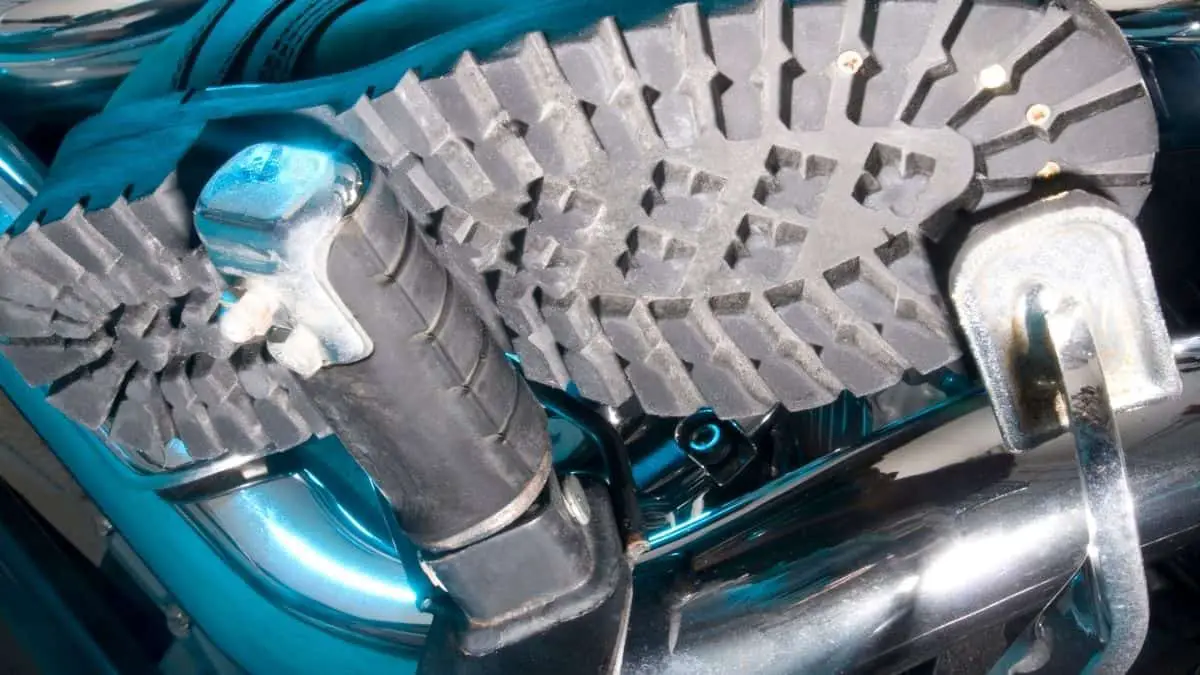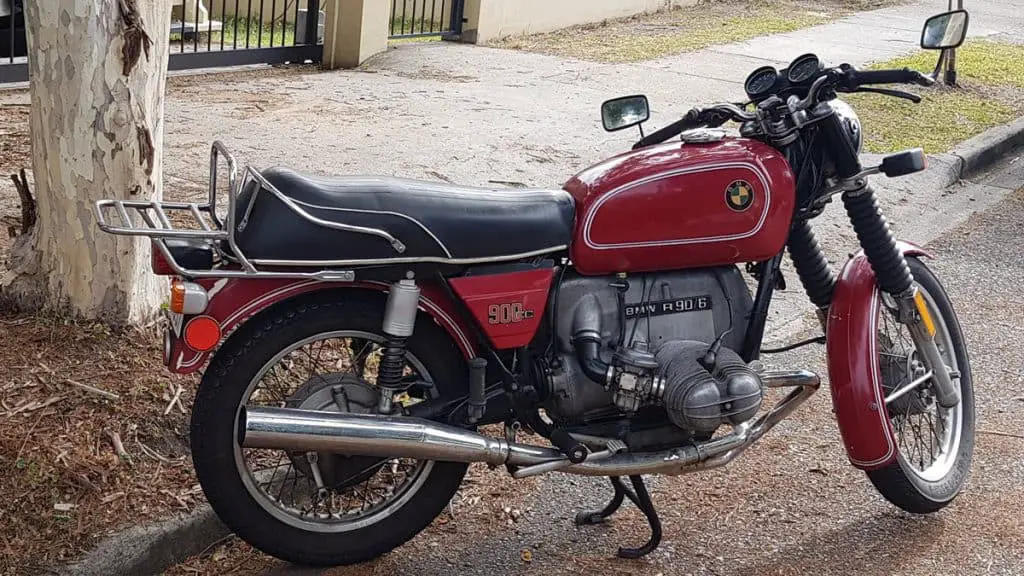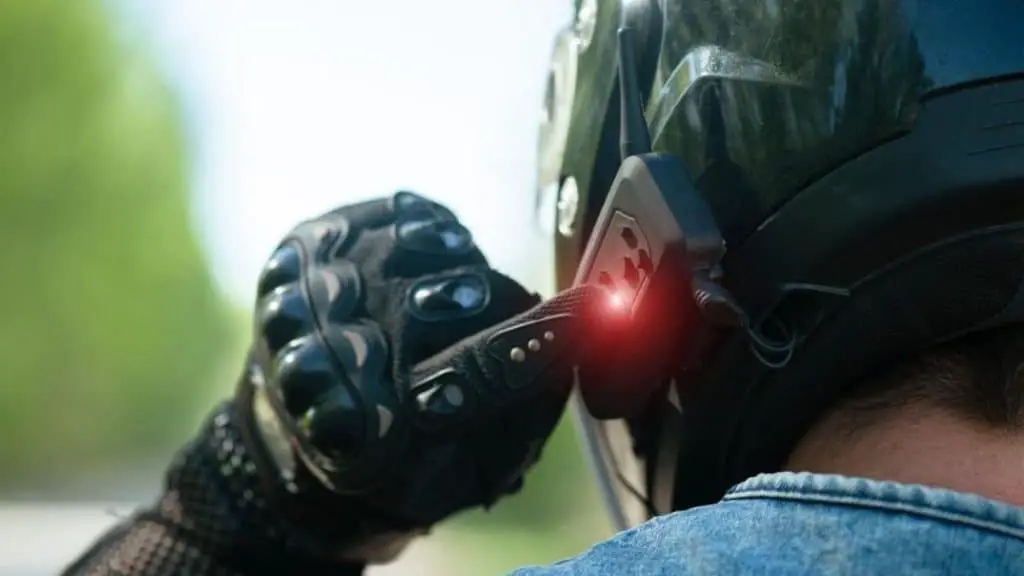1 Up 5 Down – Let’s Decipher The Code
I know how much you love that bad boy of yours.
Even so, a time may come when you might have to upgrade to a new motorcycle.
And that’s when you might find that the gears you were shifting with your eyes closed aren’t so easy to control anymore.
Yes. Adjusting to motorcycles with completely different gear shift patterns is a real pain.
So what’s the concept of 5 up 1 down or 1 up 5 down gear shift patterns and what exactly do these terms mean?
Let’s find out.
1 Up 5 Down or 5 Up 1 Down
Actually, this is one aspect of motorcycle gears than confuses many amateurs. But it’s not as difficult as it sounds.
In reality, there’s no universal gear shift pattern for motorcycles. However, most street motorcycles are moving towards adopting the 5 up 1 down pattern.
Generally, most motorcycles come with a “1 down 5 up gear shift pattern” or a “1 down 4 up gear shift pattern”.
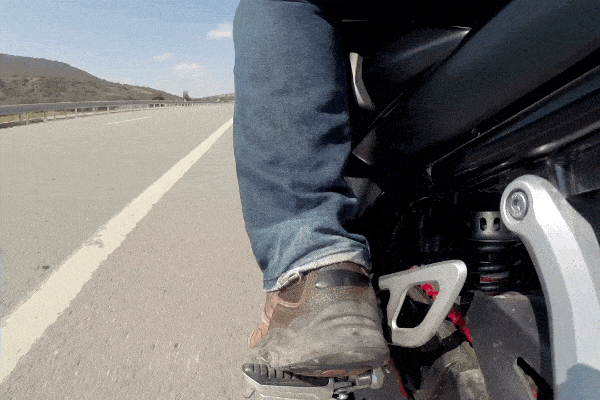
What does 1 down 5 up mean?
This means, you need to move the gear shift lever down for the first gear, and move it up for the higher gears.
This shift is also called the road shift as it’s the most common motorcycle used on the roads.
The neutral setting is located midway or “half a click” between the first and second gears. You can always bypass it while shifting between the first and the second gears.
(Reminds me of the frustrations of not finding the neutral in my amateur days.)
Why the peculiar positioning of the neutral?
Here’s is one fact about the world of engineering – nothing is done without good reasons.
Technically, the neutral can be anywhere within the shift system. But the primary reason for this position is safety.
Imagine what would happen if you make the mistake of shifting into neutral while traveling at higher speeds in the fourth or fifth gear.
A disaster to say the least!
Also, there’s the issue of convenience. Neutral is only used when the bike has to be stopped. Chances are you will already be in the first or second gears at that point.
And having the first gear at the bottom makes a lot of sense. Even if your bike doesn’t have a gear selector light, you can easily push the pedal all the way down to pull away.
In addition, there are motorcycles with other types of gear patterns too. Take a look:
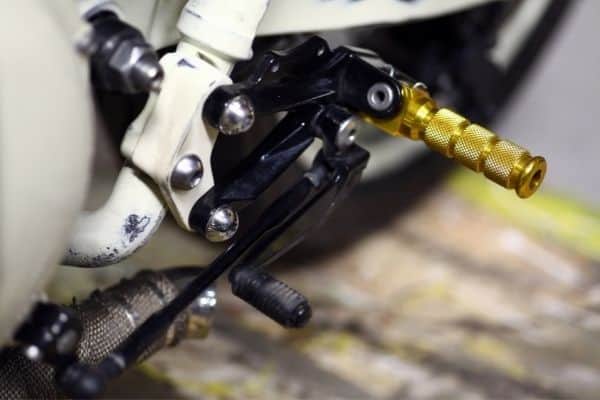
The 1 up 5 down pattern is also known as the GP shift or race shift. The pattern is popular among racers who need to tackle curves and take sharp turns.
The reason behind that is simple. When the racer is leaning deeply into a sharp curve, it’s difficult to place the feet below the shift lever. With a thick boot on, it gets tougher.
(You might find your toes touching the ground every time you lean heavily to the left.)
On the other hand, pushing the lever down allows for better control of the bike.
Fact is, mastering GP shifting isn’t an easy task for riders used to a street bike. For everyday riders, the 1 down 5 upshift system with a clutch is good enough.
If you’re looking for a 1 down 5 up vs 1 up 5 down contest, don’t. Both systems have their own advantages and one isn’t necessarily better than the other.
For a rider using more than a single type of bike, things can get complicated. Slipping onto the wrong muscle memory mode while driving a 1 up 5 down bike can make things really messy.
With more and more street bikes using the 5 up 1 down system it can very well become the universally adopted system in the future.
How does motorcycle gear shift work?
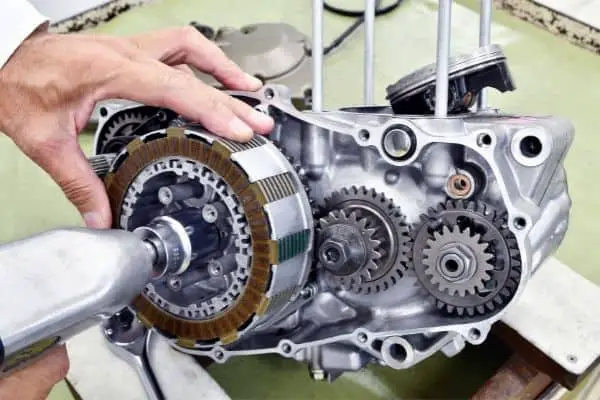
No matter the type of gear shift you use, the basic mechanism is mostly similar.
From the outside, the gear shift arrangement looks simple. But, there’s a lot going on inside the belly of your beast.
On the left side of the engine, you have the pedal called the “gearshift lever” or the “toe shifter”.
Note that the choice of the left side is based on manufacturing regulations that were passed in the ’70s.
After pulling the clutch you use your left foot to press this lever down or move it up as per the pattern. The purpose is to match the gear combinations to meet a variety of torque and speed requirements.
Unless you buy an automatic bike, bikes come with manual transmissions. And most of them have a sequential transmission system.
This means that you’ll have to shift in a specific order. That’s a major difference between motorcycle gears and the gears in a car.
The different gears are mounted on an input shaft and an output shaft. The gears can rotate on their respective axis and a few can also slide along the shafts.
The input shaft is connected to the engine crankshaft and is operated by the clutch. It starts rotating once you pull the clutch.

Still with me?
Great!
As you move the gear lever, the movement is transmitted to the gears through a ratchet mechanism connected to shifting forks. The movement literally shifts the gears across the shaft.
The meshing of the gear teeth varies depending on the position of the shift lever. This causes the output shaft to rotate. This shaft is connected to the drive sprocket which delivers power to the rear wheel through the drive chain.
To wind up, the secret to smooth gear shifting is practice. Once you perfect the technique of balancing your clutch hand and foot, it’s time for a cool spin.
And let’s not forget automatic transmission.
The idea may be pooh-poohed by many grizzled riders. But the new DCT Honda models like the NC750X, or the Gold Wind are great options for newbies entering the world of motorcycling.
Frequently Asked Questions
What is the standard shift pattern for a motorcycle?
The 1 down 5 up gear pattern is the common system in most street motorcycles. In this shift system, the gear shift lever is pressed down for the first gear and moved up for the rest.
How does motorcycle gear shift work?
The gear shifting in a motorcycle works along with the clutch. This transfers the power from the engine to the drive chain, based on the required speed and torque output.
Do all motorcycles have the same shift pattern?
Not all motorcycles have the same shift pattern. The 1 down 5 up and the 1 up 5 down systems are the most common ones. Beyond that, there are a few other systems used in some bikes.

